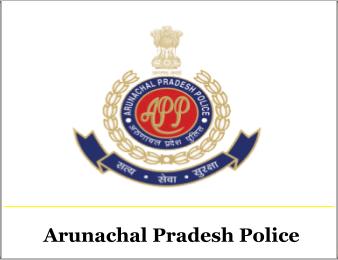Arunachal Pradesh Police

Arunachal Pradesh Police
Prior to the independence of the country, the British had introduced the Assam Frontier (Administration of Justice) Regulation, 1945, so as to ensure that a vast majority of disputes and cases, both civil and criminal, were adjudicated in accordance with the prevailing traditional codes of the tribal communities. Even though the Indian Penal Code was already in existence to facilitate holding of trials by regular courts whenever it became absolutely necessary, nevertheless, it was well recognized that the conventional legal system was unsuitable for the tribal societies. The regulations recognized the age old authority of village councils, where they existed, also the authority of village headmen and the system of Chieftainship, in so far as they contributed to the continuance of indigenous legal system. According to the Regulation, the ordinary duties of police in respect of crimes were to be discharged by the village authorities, appointed under section 5 of the Regulation of 1945, who were also entrusted with the task of maintaining peace and order within their jurisdiction. The Regulation, however, stated explicitly that the village authorities would not be deemed to be police officers for purposes of section 25 and section 26 of the Indian Evidence Act, 1872 or the section 62 of the Code of Criminal Procedure 1898. These statutory village authorities were different from Kebangs, the traditional village councils. A village authority was empowered to impose a fine not exceeding Rs. 50/- for any offence that, they were competent to try. With regard to police duties, the village authorities, besides keeping watch on suspicious characters, had the power to apprehend any person suspected of having committed a crime or hand over a person so apprehended to the political officer or an Assistant Political Officer for custody. Provisions were also made for appeals to higher courts of law against the decision of a village authority. Thus, at the basic level of village, the traditional village authorities were left with complete freedom to regulate the social, cultural and legal affairs of the villages. Above the village level, where indigenous political and legal structure was absent, the gap was sought to be filled by the regular administrative apparatus as prevailed in other parts of the country. However, the society being primarily rural, such instances were extremely rare
All the district headquarters of the erstwhile NEFA were established between 1953 and 1955. The sub-division were under Assistant Political Officers I (later designated Assistant Commissioners) and Assistant Political Officers II (later designated Extra Assistant Commissioners); and administrative circles were under Base Superintendents ( later designated Circle Officers). Though a separate Indian Police Service cadre had been constituted for the Union Territories, NEFA became a Union Territory under the changed nomenclature of Arunachal Pradesh only in 1972. The policing of the area prior to that was entrusted to the Assam Rifles which actually served as frontier guards but also had the additional duty of protecting the newly established administrative centers as well as maintaining peace amongst the tribes.
Those days the Assam Rifles was under the command of a Civil officer- the Inspector General of the Assam Rifles-who was responsible to the governor of Assam, in his capacity as Agent to the Government of India. There was no change either in character or status of the organization till 1959. the situation along the international border after 1959 began to grow hot and tense in view of repeated Chinese intrusions across the border, as a result, the Assam Rifles was placed under the operational control of the Army. Even after the Chinese attack in 1962, the Assam Rifles continued its functions of Civil Police in certain forward areas. It was much later that the CRPF was inducted in a big way for the purposes of policing.
Important Link:
-
(Jobs) Arunachal Pradesh Staff Selection Board (APSSB) LDC, Assistant, Clerk Recruitment 2021
- Recruitment
Courtesy: Arunachal Pradesh


